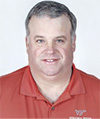The trouble was, as our acreage grew, the time lost replacing and repairing “injuries” was growing more and more critical, cutting into our ability to optimize harvest quality.
Eventually, I won out, and we put a new 10-foot disc mo-co into play in our fields. While not without its weaknesses, one thing even Dad had to admit was we could put large acreages on the ground in a hurry.
A point I will interject here is: We never gave in to the belief that you could “mow as fast as you could safely sit in the tractor seat.” Folks that bought into that kept dealers busy with parts sales for years.
When asked how I liked our disc machine, I shared that it really saved the paint on my right fender. After letting the inquisitive look pass for just a second, I would explain that a sickle-bar had to be monitored more than a disc mower.
The result of my vigil was always a large hand-sized bare spot on the right fender where I would rest my paw as I looked back. With the disc mower, I was not constantly looking over my shoulder waiting for the machine to skip a beat.
Dan Undersander, forage agronomist at the University of Wisconsin – Madison, has done some great work over the years regarding the making of high-quality hay, mostly alfalfa.
Undersander noted the sweeping changes to hay-mowing equipment configurations and abilities. According to Undersander, “Data is clear that mowers do not reduce alfalfa yield or life stand more than that of sickle-bar mowers.”
One issue that has arisen is the height settings of mowers and what impact that has on the stand. Lower cutter heights increase the yield of that cutting, but setting the height lower than 3 to 3.5 inches can affect future yields by slowing recovery and regrowth.
In the case of some grass mixtures, scalping the field may result in killing a particular species altogether.
Thinking back to high school biology, green material is needed to help the plant capture sunlight and build energy. This process is called photosynthesis: where chlorophyll uses sunlight and water to produce simple sugars and oxygen. By reducing or eliminating any green material from the field, recovery is slowed or stopped.
Another issue that can result from scalping is the establishment of weeds. Many weeds are opportunistic. By removing the canopy and increasing sunlight penetration to the ground, many broadleaf weed seeds will germinate and grow. Increasing the light penetration also elevates soil temperatures, exacerbating drought conditions that may exist.
Most machines have a one- or two-piece adjustment controls on top of the cutting platform. To check your mower, attach it to the tractor that you will be using to mow, park the equipment on a flat surface (like your shop floor), and measure the height of the knife edges from the floor.
Remember that some knives are cupped and angled, so measure them from the lowest possible point in the rotation of the knife. To raise the cutter bar, simply shorten the turnbuckle or hydraulic cylinder that is attached to the mower head – or lengthen the top link, in the case of mounted mowers. Go slowly and measure the knives during the process to eliminate over-adjustment.
Knives should be kept sharp as well. Sharp knives cut more cleanly and help plants recover by lowering the damage done at the point of cut. Knives that thrash and tear at your hay crop leave ragged edges at the plant level. Ragged edges increase the surface area damaged during the cut so regrowth is hampered.
Undersander also shared that knife selection can affect hay quality, and says, “Differing knives are available for disc mowers, and the choice among them should be made with some deliberation. The most common are knives angled at about 14 degrees to enhance picking up downed forage.
Mowers with these knives really do pick up downed forage better than those with flat knives. However, angled knives pick up soil more when the ground is dry. Angled knives can add 1 to 2 percent ash to the harvested forage. So the grower must decide which is more important – picking up downed forage or having less ash in the forage.”
Which brings us back to a good point: Mowers have adjustments on them because one size does not fit all. After considering all of your options, what is best for your operation and forage type? What are others doing in your area and what are the results? Will your practices affect you alone or others as part of your custom-harvest operation and are third parties included in that discussion?
How your mower machine is used will have a huge impact on the quality and quantity of hay produced. Technology used in concert with nature is best.
Considering all of these factors, perhaps the best advice is to “not go it alone.” If you have a question, ask. Local farmers, extension personnel and dealers can help you make sound decisions that will improve your hay crop, your hay equipment and your peace of mind. FG
Andy Overbay holds a Ph.D. in ag education and has more than 40 years of hands-on dairy and farming experience.










